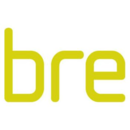Code of practice for grid connected solar photovoltaic systems
The Code of Practice for Grid Connected Solar Photovoltaic Systems was published in 2014 by the Institution of Engineering and Technology (IET). It was written by IET Standards with expert technical input from the BRE National Solar Centre.
The IET is one of the world’s largest engineering institutions with nearly 160,000 members in 127 countries, covering; energy, transport, manufacturing, information and communications, and the built environment. The BRE National Solar Centre (NSC) was established in 2012 to provide independent evidence-based information about solar energy systems and related topics.
The Code of Practice (CoP) gives designers and installers of solar photovoltaic (PV) system the knowledge they need to ensure that their systems comply with UK and international standards and good practice. It is suitable for all scales of installation, from small domestic systems to large scale PV farms. As well as industry practitioners, the CoP will be of interest to customers, owners, investors, insurers and financiers of solar PV systems.
The CoP updates UK industry practice to ensure installation of grid-connected solar photovoltaic (PV) systems in the UK is safe, effective and fit-for-purpose. In the latest edition, system earthing, fault alarms, fusing, connectors and fire detection have been reviewed in detail, with key changes made to support good practice in the UK and to align with international standards.
- All parts of a grid-connected solar PV system up to and including the connection to the AC mains.
- Low voltage and high voltage connections and components.
- Building-mounted, building-integrated and ground-mounted systems.
- Grid-connected systems with battery storage.
Jonny Williams, Director of the BRE National Solar Centre said, “The Code of Practice raises the bar for quality in the UK solar PV industry… Its publication follows extensive industry consultation and peer review – receiving more than 400 comments – resulting in guidance that is both technically robust and readily useable by everyone involved. With the solar industry making an important and growing contribution to cost-effective low-carbon electricity provision in the UK, it is crucial that all systems are designed, installed and maintained to a high quality standard – the new CoP will be a valuable tool in achieving that goal.”
Martin Cotterell, BRE National Solar Centre Associate, and expert technical author for the CoP said, “The Code of Practice represents an evolution of existing technical standards. The scope is much broader, with a lot more technical details and a number of advances based on lessons learnt by the industry over the last five years of rapid solar PV development.”
[edit] Related articles on Designing Buildings Wiki
- Battery energy storage systems with grid-connected solar photovoltaics BR 514.
- BRE National Solar Centre.
- BRE photovoltaic certification scheme.
- DC isolators for photovoltaic systems (FB 68).
- Feed in tariff.
- Fuel cell.
- Future of electricity in domestic buildings.
- Green Deal.
- Installation of photovoltaic panels on existing flat roofs - some lessons learned IP 8 14.
- Large scale solar thermal energy.
- Microgeneration.
- Micro-grid.
- Photovoltaics.
- PV inverter.
- Solar thermal systems.
- VAT hike puts brakes on home solar and batteries.
- Zero carbon homes.
- Zero carbon non-domestic buildings.
Featured articles and news
One of the most impressive Victorian architects. Book review.
RTPI leader to become new CIOB Chief Executive Officer
Dr Victoria Hills MRTPI, FICE to take over after Caroline Gumble’s departure.
Social and affordable housing, a long term plan for delivery
The “Delivering a Decade of Renewal for Social and Affordable Housing” strategy sets out future path.
A change to adoptive architecture
Effects of global weather warming on architectural detailing, material choice and human interaction.
The proposed publicly owned and backed subsidiary of Homes England, to facilitate new homes.
How big is the problem and what can we do to mitigate the effects?
Overheating guidance and tools for building designers
A number of cool guides to help with the heat.
The UK's Modern Industrial Strategy: A 10 year plan
Previous consultation criticism, current key elements and general support with some persisting reservations.
Building Safety Regulator reforms
New roles, new staff and a new fast track service pave the way for a single construction regulator.
Architectural Technologist CPDs and Communications
CIAT CPD… and how you can do it!
Cooling centres and cool spaces
Managing extreme heat in cities by directing the public to places for heat stress relief and water sources.
Winter gardens: A brief history and warm variations
Extending the season with glass in different forms and terms.
Restoring Great Yarmouth's Winter Gardens
Transforming one of the least sustainable constructions imaginable.
Construction Skills Mission Board launch sector drive
Newly formed government and industry collaboration set strategy for recruiting an additional 100,000 construction workers a year.
New Architects Code comes into effect in September 2025
ARB Architects Code of Conduct and Practice available with ongoing consultation regarding guidance.
Welsh Skills Body (Medr) launches ambitious plan
The new skills body brings together funding and regulation of tertiary education and research for the devolved nation.
Paul Gandy FCIOB announced as next CIOB President
Former Tilbury Douglas CEO takes helm.























